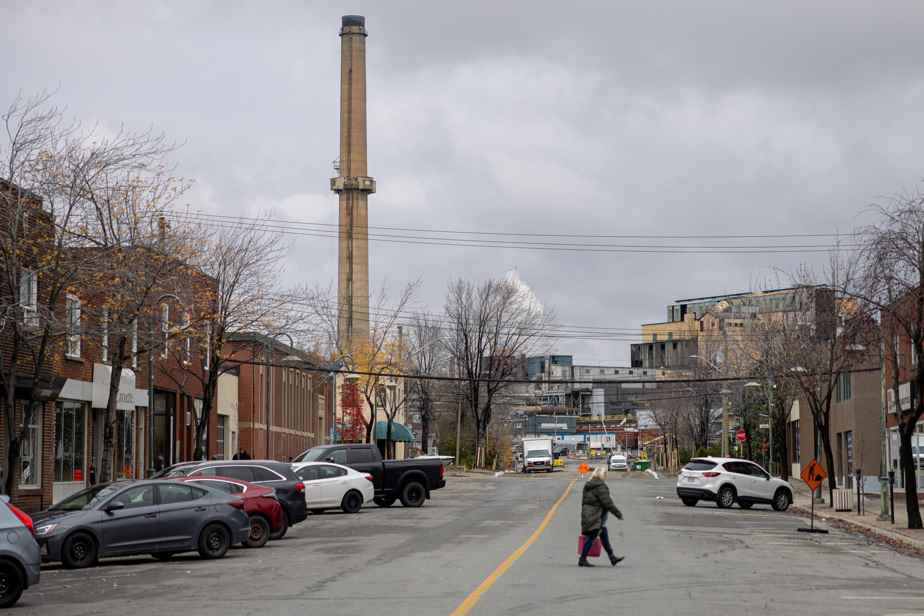Do you have questions about our editorials? Questions about hot topics in the news? Each week, the editorial team responds to readers of The Press.
Posted yesterday at 11:00 a.m.
Public Health has reportedly declared that emissions from the Horne Smelter in Rouyn-Noranda pose a minimal risk to the health of people living in that region. What is a tiny risk, and is fighting all those tiny risks around us really worth it?
Hugues Beauregard
With all that has been said, there is indeed a lot of confusion about the risks posed by the discharges from the Horne Foundry in Rouyn-Noranda.
To answer your question clearly, the current risks are very far from “minimal”.
Both the Public Health Department of Abitibi-Témiscamingue and the National Institute of Public Health of Quebec (INSPQ) confirm to us that they have never used this adjective.
Quebec’s national director of public health, Luc Boileau, himself said last summer that maintaining current emissions was “not acceptable”.
It was actually François Legault who talked about “minimal risk”, but the Prime Minister was not talking about the current risk. Rather, it referred to a scenario in which emissions from the Horne Smelter would be lowered to a concentration of arsenic in the air of 15 nanograms per cubic meter (ng/m3) at the so-called “legal” measuring station, located on the edge of the Notre-Dame district.
For now, the current agreement signed between the government and the company allows a concentration of up to 100 ng/m3 in this location. From 2005 to 2018, the average was 165 ng/m3.
The standard for arsenic that applies to the whole province is however much lower, at 3 ng/m3.
By examining the risks to the health of citizens, we understand the extent to which allowing a company to emit tens of times the norm allowed at the threshold of a residential neighborhood is a thoughtless public health experiment.
Last July, the INSPQ assessed the cancer risks associated with arsenic and cadmium in Rouyn-Noranda. The researchers took into account the risk of inhaling these contaminants present in the air, but also of ingesting them because of the contaminated dust.1
They considered a person who would live in Rouyn-Noranda for 70 years, from 1991 to 2060, with different emission scenarios for the future.
A risk considered negligible is 1 case of cancer per million inhabitants.
In a scenario where nothing is done to lower emissions, the risk reaches 61 cases per 100,000 inhabitants in the whole city, or 610 times higher than the negligible risk. For the inhabitants of the Notre-Dame district which adjoins the Foundry, it climbs to 87 cases per 100,000 inhabitants.
For the INSPQ, any risk that exceeds 10 cases per 100,000 inhabitants is considered “unacceptable”.
Given the city’s population, this would translate to approximately 14 additional cancer cases in 70 years in Rouyn-Noranda. The figure may seem low, but it results from the low population of the city. Public health experts warn that care should be taken not to conclude that small populations may be exposed to higher levels of pollution because there are fewer sick people in absolute numbers.
Cancers are not the only risks posed by contaminants emitted by the Foundry. The presence of arsenic and lead in the soil is particularly considered “worrying” by the INSPQ for the development of young children, particularly those from 6 months to 4 years old.2
According to the researchers, this exposure could lead to a drop in the intelligence quotient of children. It’s not about panicking. The scientists calculate that the current exposure would be associated with a drop generally less than one IQ point, even if “we cannot exclude effects beyond this value”, writes the INSPQ.
On an individual level, a drop of one IQ point is negligible. But on a population scale, it can lead to observable effects. The proportion of children considered low IQ, for example, will be slightly higher.
In general, the INSPQ concludes that “the current and historically high concentrations and the resulting risks have been deemed unacceptable according to the guidelines followed in public health” in Rouyn-Noranda, hence the negotiation with the company to lower the emissions.
A scenario where the Foundry would succeed in rapidly reducing its emissions to reach a concentration of 15 ng/m3 for arsenic and then eventually meet the standard of 3 ng/m3, would greatly reduce the risks. The standards for other metals should also be reached.

